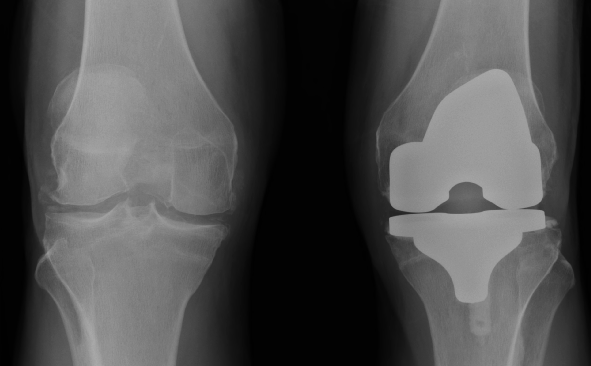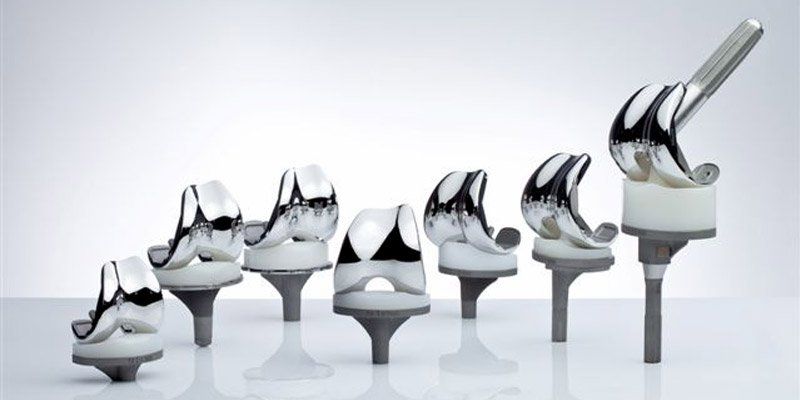ORTHOPAEDIC SURGEON
Do I Need a Knee Replacement?
Damage to the articular cartilage (the tissue that covers the bone in the joint) of the knee joint surfaces lead to wear and tear changes in the knee joint, also known as arthritis. The vast majority of patients have osteoarthritis, a small number have inflammatory arthritis and occassionally it can be caused following a fracture in a part of the knee. or more commonly by damage to the shock absorbers in the knee called the meniscus. Patients typically complain of pain in the knee and sometimes of stiffness.
Early treatments for arthritis in the knee joint include pain relief medication, physiotherapy and injection therapy. When this has failed and arthritis is causing you significant pain or impacting on your quality of life it is time to consider a knee replacement.
What is a Knee Replacement made from?
There are many different types of knee replacements available on the market and it is your surgeon who will decide on what type suits you best.
The procedure is preformed by a verticle incision approximately 10cm long on the front of the knee. The joint surfaces from the thigh bone (femur) and shin bone (tibia) are removed and occasionally the undersurface of the knee cap (patella) is also removed. The new knee consists of a metal shell on the thigh bone and the tibia with a plastic liner in the middle. They can be secured with bone cement or by a special coating on the implants that encourages bony ingrowth to the implants.
The implants are made from metal, normally a titanium alloy or other metal. The liner (the plastic piece that fits between the two metal pieces) is made from a highly cross linked polyethylene (plastic).
Complications of Total Knee Replacement Surgery
Post Operative Care















